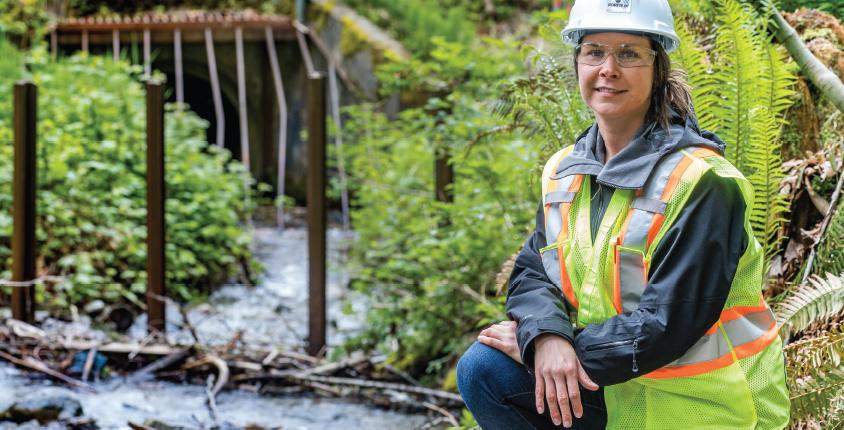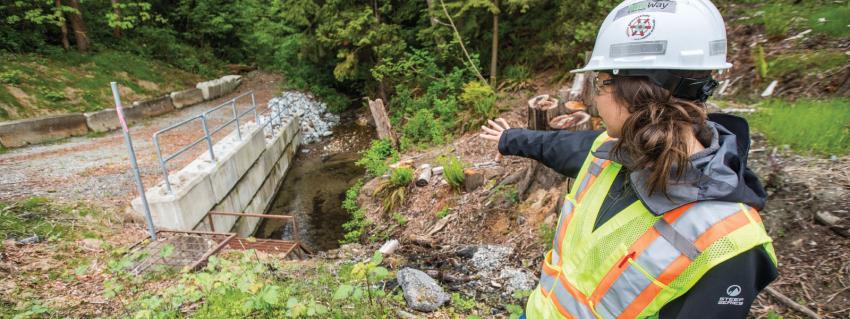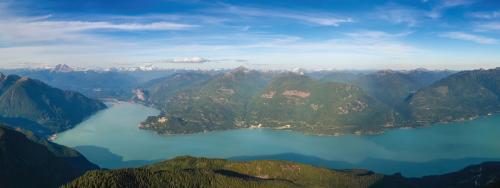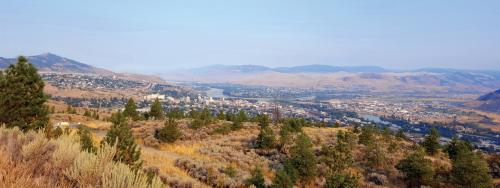Growing up, Crystal Lloyd was the go-to person among her friends for information about how to recycle everything. Her passion for the environment was obvious as early as grade eight, when she was voted “most likely to join Greenpeace” in her class yearbook.
Fast forward. Crystal is now a registered professional biologist with 10 years’ experience in the environmental industry and is FortisBC’s environmental program lead on our natural gas line upgrade projects.
Crystal oversees the environmental management plans that are in place to ensure all aspects of the natural environment are protected during our major projects. Right now, she’s working on the Vancouver to Coquitlam Upgrade project.
“I’ve always believed in protecting the environment as much as possible,” Crystal says. “Now I get to work for FortisBC doing exactly that. We can continue to enjoy it now—and so will future generations.”
To prepare for natural gas line upgrade construction, we’ve done some vegetation clearing along an existing right of way on Broadway between Underhill Avenue and Production Way in Burnaby, near the Burnaby Mountain Trail.
Trail users may wonder about the fencing, sandbags and straw we’ve put up near the trail.
Crystal says the vegetation clearing was necessary to prepare for culvert extension work on three creeks in the area—work that will be done this summer—and provide safe access for crews and equipment.
“Trees provide natural cover from the rain, and lower lying vegetation provides water filtration, preventing sediment from flowing into streams and impacting fish, fish habitat and water quality,” she says. “Since we needed to remove some vegetation, we’ve put our own temporary protection and filtration methods into place.”
Controlling sediment
“Our sediment control measures are best practices,” Crystal says. “We’re abiding by the applicable standards in the industry.”
A combination of filtration systems are set up that allow water to pass through, while trapping the sediment, including porous black sediment fencing and small multi-tiered dams. “As water flows over each tier of the dam it naturally pools allowing sediment to settle, and get trapped by the gravel,” she says.
Soil protection
Crystal says some trees were removed for the safety of the workers, but the stumps were left in place to avoid pulling out their extensive root systems and disturbing a lot of soil. “A stump is like an iceberg—there’s much more below than is visible from above.”
Any soil that was left exposed by the tree removal was covered with an organic mixture of straw and seed to protect it and help to regrow vegetation between phases of construction.
Independent environmental monitors were on site while work was going on, and they’ll be there during culvert work as well. Their job is to check water quality and ensure vegetation, fish and fish habitat are protected.
When the project is complete, planned restoration efforts include trail improvements, replacing invasive and non-native species with native plants and culvert enhancements to provide better habitat for fish.
In fact, Crystal says, “When the project is finished next year, our goal is to restore the area to better than it was before.”
For more information visit the Vancouver to Coquitlam Upgrade project page.

I’ve always believed in protecting the environment as much as possible. Now I get to work for FortisBC doing exactly that. We can continue to enjoy it now—and so will future generations.



